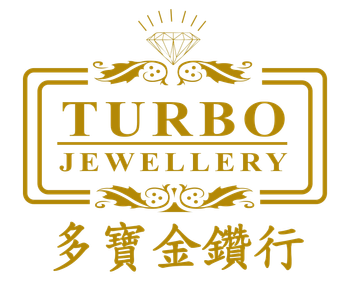Lab Grown Diamond
What is a synthetic diamond (lab-grown diamond)?
A man-made diamond is a laboratory diamond that is mass-produced to closely resemble the appearance of a natural diamond by simulating the environment in which natural diamonds are created. A synthetic diamond is a polycrystalline diamond formed by the aggregation of diamond crystals with a diameter of 10 to 30 nanometres.
In the early days, man-made diamonds were lightly coloured with sugar due to the nitrogen atoms in the air entering the diamond crystals. After scientists improved the production method, man-made diamonds are now produced without any difference in appearance from natural diamonds. As the technology for producing synthetic diamonds has matured, they have become more affordable and can be produced in a variety of colours.
Synthetic diamonds are produced in laboratories or factories. Because of their growth structure and atomic-level defects, man-made diamonds can be easily distinguished from natural diamonds by a well-equipped appraisal office such as the GIA. However, because natural and man-made diamonds share some physical and other properties, even a skilled jeweller or trained gemmologist cannot distinguish them by the naked eye alone. Rigorous identification requires trained staff using specialized equipment at a gemmological laboratory.
How are they made?
Synthetic diamonds are produced in two ways.
High Pressure High Temperature (HPHT): A high-pressure, high-temperature environment is created in a laboratory or factory to produce diamonds, which mimics the conditions under which natural diamonds are formed deep in the earth. In the growth chamber, the carbon source is broken down in molten metal, and carbon atoms are gathered through the metal into a very small man-made or natural diamond crystal, forming a uniquely shaped man-made diamond crystal.
Chemical Vapor Deposition (CVD): The CVD process uses a carbon-rich gas (such as methane) in a laboratory vacuum chamber to produce man-made diamonds. the CVD process involves breaking down methane gas molecules into carbon and hydrogen atoms, which are then deposited onto diamond seeds to form square, flattened man-made diamond crystals.
What is the difference between man-made diamonds and natural diamonds?
There are differences in the properties of natural and synthetic diamonds due to the different formation conditions.
Crystal shape: The formation temperatures of natural diamond crystals and lab-grown diamonds are similar, but natural diamonds grow into octahedral (eight equilateral triangular crystal faces) crystals, while man-made diamond crystals can grow into crystals that contain both octahedra and cubes (six square crystal faces).
How much does the price deviate from that of a natural diamond?
Shiny diamonds are precious because they take a long time to form and cannot be reproduced in a short period of time, making them a luxury item.
Man-made diamonds can be cultivated in just a few weeks, so it is foreseeable that as the industry advances and grows larger in the future, the price of man-made diamonds will continue to decrease, and they will not have any investment or value retention value.
Of course, if you purely want to have a dazzling diamond as jewelry, with cheaper prices, shopping for man-made diamonds is not inevitable, but the price of man-made diamonds is still falling, there is no guarantee that there will not be cheaper options in the future, when it is inevitable heartache.
What sizes do synthetic diamonds come in?
- Large size (approximately 5 to 10 carats or larger): These finished diamonds receive a lot of media attention, but are quite rare and may have been examined and accurately appraised at a gemmological laboratory.
- Commercial Size (approximately 0.25 to 2.5 carats): These finished diamonds are more numerous, but again, they may have been submitted to gemmological appraisals for evaluation and, of necessity, appraisal.
- Small or grain size (approximately 0.10 carats or less): these are the most abundant finished diamonds, but because of their small size, they are more difficult to assay and are not often assayed, so this is the real identification challenge for the jewellery industry
What colours do synthetic diamonds come in?
Man-made diamonds are usually colourless, nearly colourless, pale to dark yellow or yellow-brown; less often they appear blue, pink or green. Like natural diamonds, man-made diamonds can be colour-treated, so any colour is possible. Some people think it's blue-black, others think it's white-gold, and experts analyse that this is because someone is hallucinating the colour. Man-made diamonds have almost no inclusions or defects compared to natural diamonds, and they are shinier and tougher than natural diamonds. What's more, man-made diamonds are cheaper and less expensive than natural diamonds.
什么是人造钻石(实验室培育钻石)?
人造钻石是指通过模拟天然钻石生成的环境,批量生产与天然钻石外观非常接近的实验室钻石。人造钻石是一种由直径10到30纳米的钻石结晶聚合而成的多结晶钻石。
早期的人造钻石由于空气中的氮原子进入钻石晶体而呈淡淡的糖稀颜色,经过科学家的改良制作方法,现在生产的人造钻石在外观上和天然钻石没有任何差异,由于生成环境的不同,人造钻石的的分子结构并不是天然钻石的完全八面体结构而是一种复杂结构,从而会产生磷光现象。随着人造钻石生产技术的成熟,其造价低廉,且可以制作出各种颜色的钻石而在珠宝市场上崭露头角。
人造钻石在实验室或工厂培育生成。由于人造钻石具有生长结构和原子级别的缺陷,设备齐全的鉴定所(如 GIA)很容易就能将其和天然钻石区分开来。但是,由于天然钻石和人造钻石的一些物理和其他性质相同,即使熟练的珠宝商或训练有素的宝石学家也不能单凭肉眼来区分它们。严格的鉴定需要训练有素的工作人员在宝石鉴定所使用专业设备进行。
它们是如何制造出来的?
人造钻石的生产方式有两种:
高压高温法 (HPHT):在实验室或工厂中创造高压高温环境来生产钻石,也就是模仿天然钻石在地球深处的形成条件。在生长室中,碳源在熔融金属中分解,碳原子通过金属聚集到一颗很小的人造或天然钻石晶种上,形成形状独特的人造钻石晶体。
化学蒸气沉淀法 (CVD):在实验室的真空室中使用富含碳的气体(如甲烷)生产人造钻石。CVD 工艺的制作过程是先将甲烷气体分子分解成碳和氢原子,然后使其沉积在钻石晶种上,形成方形扁平的人造钻石晶体。
人造钻石与天然钻石有什么区别?
由于形成条件不同,天然钻石和人造钻石的性质也有差异。
晶体形状:天然钻石晶体和实验室培育钻石的形成温度所差无几,但天然钻石会长成八面体(八个等边三角形晶面)晶体,而人造钻石晶体可以长为同时包含八面体和立方体(六个正方形晶面)的晶体。
价格和天然钻石有多少的偏差?
闪亮亮的钻石之所以珍贵,正是因为需经历长时间形成,在短期内无法再生而具备稀有性,继而被视作奢侈品。
人造钻石只需要数周时间就能培育而成,因此可预见的,未来工业不断进步、发展规模更为庞大时,人造钻石的价格也会不断降低,这可说是不具任何投资或保值价值。
当然,如果你纯粹想要拥有一颗璀璨钻石当首饰的话,用更低廉的价格,选购人造钻石也无不可,但人造钻石的价格还在跌,难保入手后,未来不会有更低廉的选项出现,届时难免心疼。
人造钻石有什么大小?
- 大尺寸(大约 5 至 10 克拉或更大):这类成品钻石广受媒体关注,但相当罕见,并且可能已在宝石检测鉴定所进行过检验和准确鉴定。
- 商用尺寸(大约 0.25 至 2.5 克拉):这类成品钻石的数量更多,但同样地,它们可能会被提交给宝石鉴定所进行评估,必然也会进行鉴定。
- 小尺寸或米粒尺寸(大约 0.10 克拉或更小):这类成品钻石的产量最大,但由于尺寸小,检测更为困难,且并不经常会进行检测,因此这是珠宝行业面临的真正鉴定挑战
人造钻石有什么颜色?
人造钻石通常为无色、近无色、淡到深黄色或黄-褐色;较少出现蓝色、粉红色或绿色。和天然钻石一样,人造钻石也可以进行颜色处理,所以任何颜色都有可能。有人认为蓝黑色,有人认为是白金色,专家分析,这是因为有人对颜色产生了幻觉。人造钻石和天然钻石相比,几乎没有任何杂质和缺陷,而且比天然钻石更加闪亮,更加坚韧。更重要的是,人造钻石比天然钻石更便宜,价格也更便宜。




